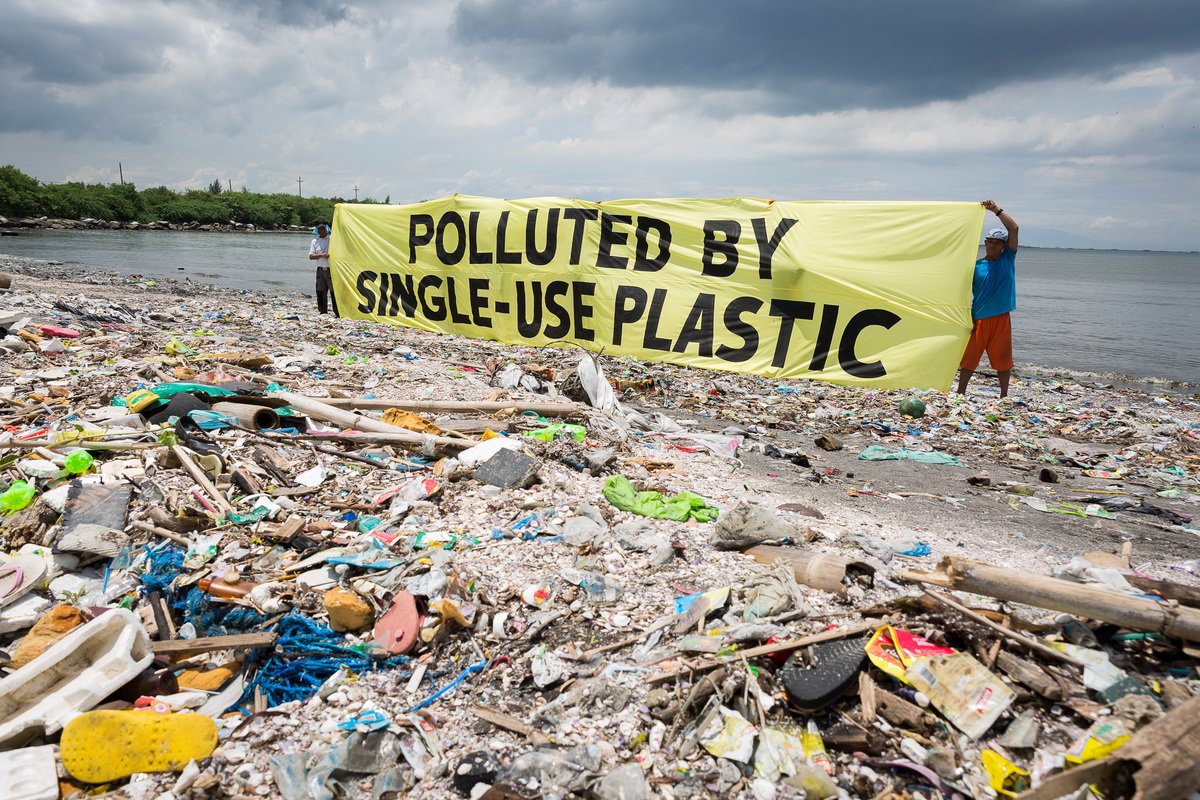World Refill Day has returned for its third year. The intention is to grow awareness and help people live with less waste.
But what is refill or reuse?
Refill and reuse systems are important to a circular economy that end runaway plastic production. Refill and reuse recognises the value of a product, and the energy, resources and emissions spent in its design and manufacture.
We acknowledge that value by keeping it in use for as long as possible.
How does refill and reuse work?
It is normalising carrying a drink bottle or a coffee cup with you each day, turning down single-use bottled beverages or takeaway cups. On a larger scale, it can mean community-led hubs and stations that can collect and / or sterilise containers and refill products like drinks, food and other consumables. It means green, local jobs.
I’ve just returned from the second round of negotiations for a Global Plastics Treaty. There, Greenpeace and our allied friends and groups were encouraging world governments to push for the most ambitious treaty, aiming for action high up on the waste hierarchy.
We need reductions on plastic production, and prioritization of refill and reuse. It’s an important part of ending plastic pollution. We need major cuts to plastic production, particularly where virgin plastic is concerned, but as we transition away from plastic, we must also move away from a linear economy.
We need systems change to refill and reuse
We can’t replace one single-use plastic product for another single-use product made of another material.
Here in Aotearoa New Zealand, Greenpeace Aotearoa wants to ban the bottle, and our demands are two-fold.
We want the government to ban single-use plastic bottles, and we want the government to incentivise refill and reuse systems.
We think it’s a necessary course of action that must be included in the government’s National Plastic Action Plan, following the successful plastic bag ban.
And it can put us on the right path for other refill and reuse alternatives to single use packaging.
Our petition to ban the bottle has been hugely popular, gaining the support of more than 100,000 signatures.
Refillable beverage systems aren’t new.
I remember leaving empty milk bottles out by the letterbox to be collected and full bottles would be left behind in their place. And I remember my Poppy and my uncle would take flagon bottles to the pub and get them refilled with their beer of choice.
Last month, I delivered my oral submission to the Environment Select Committee for our Ban the Bottle petition. I recalled my memories of milk bottles and beer flagons and I had one response from within the committee that “you still can”. It’s true. There are conscious producers and retailers trying to do their best by our planet, our communities and the climate.
They are promoting refill and reuse and minding their environmental impact unfortunately however, within a system that doesn’t favour these values. It’s an uneven playing field. A throwaway, linear economy, convenience culture, and incentives and subsidies for the biggest plastics polluters Big Oil and companies like Coca-Cola make shifting to circularity like refill, difficult and unviable.
But Coke isn’t going to voluntarily do the right thing. At the plastics treaty negotiations, Coke is part of a Business Coalition that is trying to weaken the ambition of the treaty and keep the focus on downstream actions. They are propagating their false solutions such as recycling, waste to energy and pyrolysis. Their hands will need to be forced. And world governments will need to do it.
World Refill Day might be calling for individuals to take personal responsibility but if we are serious about addressing the plastics crisis we’re in, we must call on our decision makers for transformative system change that cuts plastic production and follows the waste hierarchy.




